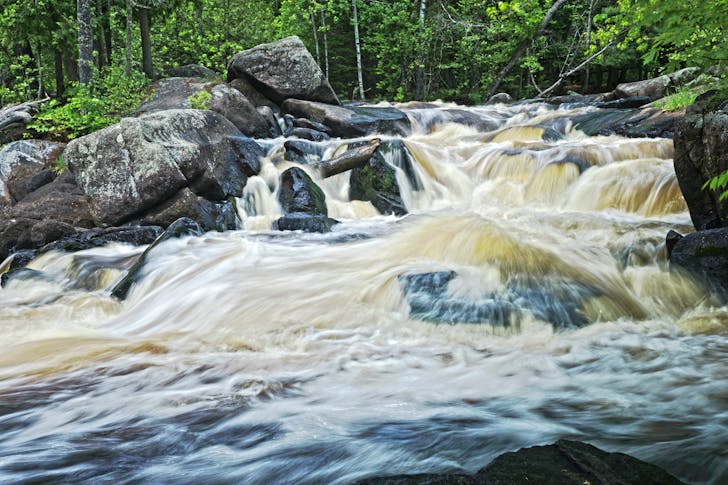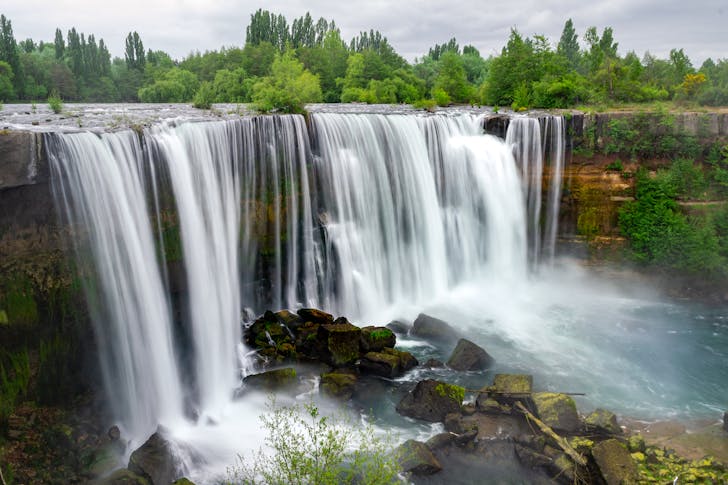Have you ever wondered how does water change the shape of Earth's surface? It's a phenomenon that's as constant as the flow of a river yet as transformative as the birth of a mountain. In its many forms, water is a powerful architect of our planet's landscape. From the humble stream in your backyard to the vast oceans that span horizons, water is continuously at work, sculpting the Earth in subtle and dramatic ways. Let's dive into the riveting journey of how water shapes the face of our planet.
The Power of Running Water: Rivers and Streams at Work
The journey begins with the running water of rivers and streams, nature’s chisels and hammers. As they course through the land, they engage in a relentless process called weathering. This isn’t your daily weather forecast but a geological process where rocks are broken down into smaller pieces. Imagine the force of water, day in and day out, beating against the rock. Over time, this persistent action leads to the disintegration of rocks, altering the topographic features of the Earth. This is how deep valleys and gorges are born, out of the persistence of flowing water.
Erosion and Deposition: Nature’s Art of Sculpting Landforms
As weathered rock pieces become frail, they are quickly swept away by moving water. This process, known as erosion, is nature’s way of cleaning and sculpting the landscape. But where does all this material go? That’s where deposition steps in. Water doesn’t just take; it gives back, depositing rocks and sediments in new places and creating new landforms. This cycle of erosion and deposition is like a grand-scale art project, with rivers and streams meticulously crafting features like deltas, floodplains, and alluvial fans.
The Dissolving Power of Water
Water’s ability to dissolve many substances is crucial in reshaping Earth’s surface. This property is a game-changer, facilitating the transport of materials such as soil, rocks, and minerals to different locations. It’s a global conveyor belt powered by water, moving and redistributing the Earth’s crust. This aspect of water alters the physical landscape and enriches the soil in different regions, making areas more fertile and habitable.
A Living Example: The Creation of the North Indian Plains
To see this phenomenon in action, let’s look at the North Indian Plains. This vast stretch of land owes its existence to the erosional and depositional activities of the rivers draining that region. The Himalayan rivers, carrying sediments from the mountains, spread them across the plains, creating fertile land and supporting civilizations for millennia. It’s a testament to how water can create life-sustaining environments through its transformative actions.
Water’s Continuous Influence
The influence of water on the Earth’s surface is not a chapter from the past but an ongoing story. With climate change and human intervention altering natural waterways, how water shapes our planet is also changing. It’s a reminder of the delicate balance we share with nature and the pivotal role water plays in sculpting the world around us.
Water: The Sculptor of Earth’s Masterpieces
In the grand narrative of Earth’s geological history, water emerges as a master sculptor, its tools being weathering, erosion, and deposition. From the majestic canyons carved by the relentless flow of rivers to the fertile plains cradled by sediment deposits, water shapes the planet in ways that inspire wonder and awe. It’s a natural artist, constantly at work, reminding us of the power and beauty inherent in the natural world.
So, the next time you stand before a breathtaking landscape, remember water's silent yet forceful role in crafting the scene before you. It’s a reminder of how water changes the shape of Earth’s surface, a testament to the ever-evolving masterpiece that is our planet.



